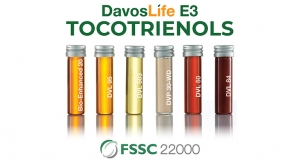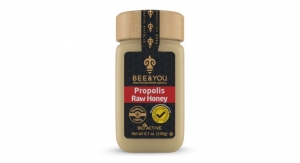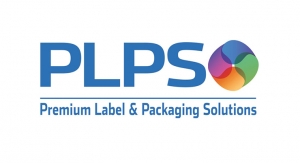09.01.17
Confusion Over Personal Care Ingredients Impacts Purchasing
American women are increasingly evaluating the contents of their personal care products and still walking away confused as to what the ingredients are and whether or not they fit into their personal requirements. In response, shoppers are more willing to comparison shop for personal care products with recognizable ingredients and pay more for those products, according to a study from Label Insight, which surveyed more than 1,000 consumers on the importance of ingredients in personal care products, feelings of confusion with personal care product ingredients and labeling, and the behavioral impact of this confusion on purchasing behavior.
Label Insight’s 2017 Ingredient Confusion study found that consumers consider ingredients when evaluating personal care products. For example, 68% of those surveyed believe it is important or extremely important to consider the ingredients when deciding which products to buy.
However, consumers often do not recognize ingredients on labels; 81% of those surveyed do not recognize ingredients on the label of personal care products at least somewhat often. Only 2% of women said they always understand what all of the ingredients are.
When buying personal care products, 79% of women said they are at least sometimes confused about ingredients listed on the package label. Of those, 45% are often, very often, or almost always confused.
When considering a personal care product to buy, if the ingredients on the label are confusing: 33% of women would not buy the product and look to another product instead; 55% of women would look at another product to see if they understand the ingredients better; 44% of women would research the ingredients on their mobile phone while shopping the aisle.
Ingredient confusion also impacts brand trust and purchase behavior. The study revealed that when consumers don’t understand product ingredients, it impacts their feelings toward the brand, and purchase behavior; 45% of those surveyed say they trust the brand less when they see personal care ingredients they don’t recognize or find confusing.
When it comes to making a purchase, 61% of women are more likely to buy personal care products that contain ingredients they understand or recognize. The study showed 53% would be willing to switch to a different personal care product if they understood the ingredients in that product better; 49% will pay more for a personal care product that contains ingredients they understand or recognize.
When presented with a confusing, but harmless, ingredient, Tetrahexyldecyl Ascorbate, 88% were not familiar with it and 49% said they would not be comfortable buying a product that contained it. Once defined as liquid form of vitamin C used in cosmetics and personal care products that enables the vitamin C to penetrate the skin more effectively, there was a 43% increase in those who said they would be “very comfortable” purchasing the product.
“While consumer demand for product transparency in food and beverage has experienced a groundswell, our study shows that interest in transparency for personal care products is also on the rise,” said Kira Karapetian, vice president of marketing for Label Insight. “Women in particular are concerned about what is in their personal care products—from lotion to shampoo to sunscreen—and will make buying decisions based on ingredient data. It will be important for manufacturers to respond and to provide solutions such as SmartLabel in order to address these demands.”
SmartLabel gives consumers a way to access more detailed product information about a wide range of food, beverage, household, pet care, and personal care products. It’s fast and easy to use, with a consistent digital format that shares accurate product data directly from the manufacturer. Through online landing pages that are accessible by smartphones, tablets, and desktops, consumers can find product information organized in a consistent manner, including ingredient definitions and the reason each ingredient is in the product.
Key Mechanisms of Inflammation, Cancer & Aging Explored
A team of University of Pittsburgh researchers uncovered new details about the biology of telomeres, “caps” of DNA that protect the tips of chromosomes and play key roles in a number of health conditions, including cancer, inflammation and aging. Findings were published in the journal Nature Structural and Molecular Biology.
Telomeres, composed of repeated sequences of DNA, are shortened every time a cell divides and therefore become smaller as a person ages. When they become too short, telomeres send a signal to the cell to stop dividing permanently, which impairs the ability of tissues to regenerate and contributes to many aging-related diseases, explained lead study author Patricia Opresko, PhD, associate professor of Environmental and Occupational Health at the University of Pittsburgh, and member of the school’s Cancer Institute Molecular and Cellular Cancer Biology program and Carnegie Mellon University Center for Nucleic Acids Science and Technology.
In contrast, in most cancer cells, levels of the enzyme telomerase, which lengthens telomeres, are elevated, allowing them to divide indefinitely.
“The new information will be useful in designing new therapies to preserve telomeres in healthy cells and ultimately help combat the effects of inflammation and aging. On the flip side, we hope to develop mechanisms to selectively deplete telomeres in cancer cells to stop them from dividing,” said Dr. Opresko.
A number of studies have shown that oxidative stress—a condition where damaging molecules known as free radicals build up inside cells—accelerates telomere shortening. Free radicals can damage not only the DNA that make up telomeres, but also the DNA building blocks used to extend them.
Oxidative stress is known to play a role in many health conditions, including inflammation and cancer. Damage from free radicals, which can be generated by inflammation in the body as well as environmental factors, is thought to build up throughout the aging process.
The goal of the study was to determine what happens to telomeres when they are damaged by oxidative stress. The researchers suspected that oxidative damage would render telomerase unable to do its job. “Much to our surprise, telomerase could lengthen telomeres with oxidative damage,” Dr. Opresko said. “In fact, the damage seems to promote telomere lengthening.”
Next, the team looked to see what would happen if the building blocks used to make up telomeres were instead subjected to oxidative damage. They found that telomerase was able to add a damaged DNA precursor molecule to the end of the telomere, but was then unable to add additional DNA molecules.
The new results suggest that the mechanism by which oxidative stress accelerates telomere shortening is by damaging the DNA precursor molecules, not the telomere itself. “We also found that oxidation of the DNA building blocks is a new way to inhibit telomerase activity, which is important because it could potentially be used to treat cancer.”
Dr. Opresko and her team are now beginning to further explore the consequences of oxidative stress on telomeres using a novel photosensitizer, developed by Marcel Bruchez at Carnegie Mellon University that produces oxidative damage selectively in telomeres. “Using this exciting new technology, we’ll be able to learn a lot about what happens to telomeres when they are damaged, and how that damage is processed,” she said.
High-Doses of Vitamin D May Improve Sunburn
High doses of vitamin D taken one hour after sunburn significantly reduced skin redness, swelling, and inflammation, according to a double-blinded, placebo-controlled clinical trial out of Case Western Reserve University School of Medicine and University Hospitals Cleveland Medical Center. The trial results were published in the Journal of Investigative Dermatology.
In the study, 20 participants were randomized to receive a placebo pill or 50,000, 100,000, or 200,000 IU of vitamin D one hour after a small UV lamp “sunburn” on their inner arm. Researchers followed up with the participants 24, 48, 72 hours, and 1 week after the experiment and collected skin biopsies for further testing. Participants who consumed the highest doses of vitamin D had long-lasting benefits—including less skin inflammation 48 hours after the burn. Participants with the highest blood levels of vitamin D also had less skin redness and a jump in gene activity related to skin barrier repair.
“We found benefits from vitamin D were dose-dependent,” said Kurt Lu, MD, senior author on the study and assistant professor of dermatology at Case Western Reserve University School of Medicine and University Hospitals Cleveland Medical Center. “We hypothesize that vitamin D helps promote protective barriers in the skin by rapidly reducing inflammation. What we did not expect was that at a certain dose, vitamin D not only was capable of suppressing inflammation, it was also activating skin repair genes.”
The trial was the first to describe acute anti-inflammatory benefits from taking vitamin D, researchers said. According to the authors, despite widespread attention given to vitamin D deficiency, “there is a lack of evidence demonstrating that intervention with vitamin D is capable of resolving acute inflammation.”
By measuring gene activity in the biopsies, the researchers also uncovered a potential mechanism behind how vitamin D aids skin repair. The results suggest vitamin D increases skin levels of an anti-inflammatory enzyme, arginase-1. The enzyme enhances tissue repair after damage and helps activate other anti-inflammatory proteins.
The trial tested very high doses of vitamin D that far exceed daily allowances. The Food and Drug Administration’s recommended adult daily allowance for vitamin D is 400 IU. “I would not recommend at this moment that people start taking vitamin D after sunburn based on this study alone,” said Dr. Lu. “But, the results are promising and worthy of further study.” Dr. Lu and colleagues are planning additional studies that could inform treatment plans for burn patients.
Study Links Chili Peppers and Reduced Mortality
Consumption of hot red chili peppers was associated with a 13% reduction in total mortality, primarily in deaths due to heart disease or stroke, according to a large prospective study conducted by researchers at the Larner College of Medicine at the University of Vermont and published in PLoS ONE.
Going back centuries, peppers and spices have been thought to be beneficial in the treatment of diseases, but only one other study—conducted in China and published in 2015—has previously examined chili pepper consumption and its association with mortality, researchers said. This new study corroborates the earlier study’s findings.
Using National Health and Nutritional Examination Survey (NHANES) III data collected from more than 16,000 Americans who were followed for up to 23 years, medical student Mustafa Chopan and Professor of Medicine Benjamin Littenberg, MD, examined the baseline characteristics of the participants according to hot red chili pepper consumption. They found that consumers of hot red chili peppers tended to be “younger, male, white, Mexican-American, married, and to smoke cigarettes, drink alcohol, and consume more vegetables and meats … had lower HDL-cholesterol, lower income, and less education,” in comparison to participants who did not consume red chili peppers. They examined data from a median follow-up of 18.9 years and observed the number of deaths and then analyzed specific causes of death.
“Although the mechanism by which peppers could delay mortality is far from certain, Transient Receptor Potential (TRP) channels, which are primary receptors for pungent agents such as capsaicin (the principal component in chili peppers), may in part be responsible for the observed relationship,” the study authors said.
There are some possible explanations for red chili peppers’ health benefits, they added. Among them are the fact that capsaicin is believed to play a role in cellular and molecular mechanisms that prevent obesity and modulate coronary blood flow, and also possesses antimicrobial properties that “may indirectly affect the host by altering the gut microbiota.”
“Because our study adds to the generalizability of previous findings, chili pepper—or even spicy food—consumption may become a dietary recommendation and/or fuel further research in the form of clinical trials,” researchers said.
Consumers Recognize Tomato’s Health Benefits
Consumers have high awareness of carotenoids as well as the specific skin health benefits of tomatoes, according to research from Israel-based ingredient supplier Lycored. The global wellness company surveyed 329 consumers in the U.K. aged 50 or over who took supplements at least once a week. The majority (92%) had heard of antioxidants and more than half (52%) had heard of carotenoids. Nearly four in 10 (38%) had heard of lycopene—one of the tomato-derived carotenoids in Lycoderm, Lycored’s supplement-ready skin care blend.
There was also high awareness of the specific health benefits of tomatoes, particularly for skin. More than half (53%) knew that nutrients in tomatoes have benefits for skin health. Additionally, 45% were aware of benefits for cardiovascular health, while 39% of the men surveyed knew about the benefits for prostate health. Over a quarter of the women surveyed (26%) were aware that nutrients found in tomatoes have benefits for health during menopause.
“As a company that has always been inspired by the many health-bringing properties of the tomato, we’re particularly excited about the findings on lycopene,” said Zev Ziegler, head of global brand & marketing, Health, at Lycored. “We’ve seen how it can positively impact on health, and with name recognition so high, we believe lycopene will become increasingly sought after as an ingredient in supplements.”
Research Shows BiovaDerm Reduces Appearance of Wrinkles
Topical use of BiovaDerm, a water-soluble egg membrane (WSEM) ingredient manufactured in the U.S. by Biova LLC, Johnston, IA, was shown to reduce the appearance of wrinkles after eight weeks, according to an open-label study published in Clinical, Cosmetic and Investigational Dermatology.
Research showed daily topical use of BiovaDerm on facial skin significantly reduced the appearance of wrinkles after eight weeks, as measured across three parameters: roughness, contour, and depth. This study corroborates results seen in Biova’s prior trial research studies. Further, the researchers pointed to WSEM’s association with additional mechanisms of cellular activity whereby BiovaDerm might offer natural skin health support and restoration, especially under conditions of oxidative stress, thus contributing to prophylactic anti-aging effects among other applications.
“We’re seeing significant interest in BiovaDerm because there’s a large consumer market of adults concerned with overall health, skin care and the effects of aging,” said Kathy Hockla, channel manager for Biova. “BiovaDerm is unique—it offers formulators a new, natural, research-proven ingredient to support skin care and reduce the visible signs of aging and facial wrinkles.” In its formulary state, BiovaDerm has an off-white color, with a mild, easy-to-mask scent from which to develop formulations for lotions, creams, and other topical applications, the company said.
American women are increasingly evaluating the contents of their personal care products and still walking away confused as to what the ingredients are and whether or not they fit into their personal requirements. In response, shoppers are more willing to comparison shop for personal care products with recognizable ingredients and pay more for those products, according to a study from Label Insight, which surveyed more than 1,000 consumers on the importance of ingredients in personal care products, feelings of confusion with personal care product ingredients and labeling, and the behavioral impact of this confusion on purchasing behavior.
Label Insight’s 2017 Ingredient Confusion study found that consumers consider ingredients when evaluating personal care products. For example, 68% of those surveyed believe it is important or extremely important to consider the ingredients when deciding which products to buy.
However, consumers often do not recognize ingredients on labels; 81% of those surveyed do not recognize ingredients on the label of personal care products at least somewhat often. Only 2% of women said they always understand what all of the ingredients are.
When buying personal care products, 79% of women said they are at least sometimes confused about ingredients listed on the package label. Of those, 45% are often, very often, or almost always confused.
When considering a personal care product to buy, if the ingredients on the label are confusing: 33% of women would not buy the product and look to another product instead; 55% of women would look at another product to see if they understand the ingredients better; 44% of women would research the ingredients on their mobile phone while shopping the aisle.
Ingredient confusion also impacts brand trust and purchase behavior. The study revealed that when consumers don’t understand product ingredients, it impacts their feelings toward the brand, and purchase behavior; 45% of those surveyed say they trust the brand less when they see personal care ingredients they don’t recognize or find confusing.
When it comes to making a purchase, 61% of women are more likely to buy personal care products that contain ingredients they understand or recognize. The study showed 53% would be willing to switch to a different personal care product if they understood the ingredients in that product better; 49% will pay more for a personal care product that contains ingredients they understand or recognize.
When presented with a confusing, but harmless, ingredient, Tetrahexyldecyl Ascorbate, 88% were not familiar with it and 49% said they would not be comfortable buying a product that contained it. Once defined as liquid form of vitamin C used in cosmetics and personal care products that enables the vitamin C to penetrate the skin more effectively, there was a 43% increase in those who said they would be “very comfortable” purchasing the product.
“While consumer demand for product transparency in food and beverage has experienced a groundswell, our study shows that interest in transparency for personal care products is also on the rise,” said Kira Karapetian, vice president of marketing for Label Insight. “Women in particular are concerned about what is in their personal care products—from lotion to shampoo to sunscreen—and will make buying decisions based on ingredient data. It will be important for manufacturers to respond and to provide solutions such as SmartLabel in order to address these demands.”
SmartLabel gives consumers a way to access more detailed product information about a wide range of food, beverage, household, pet care, and personal care products. It’s fast and easy to use, with a consistent digital format that shares accurate product data directly from the manufacturer. Through online landing pages that are accessible by smartphones, tablets, and desktops, consumers can find product information organized in a consistent manner, including ingredient definitions and the reason each ingredient is in the product.
Key Mechanisms of Inflammation, Cancer & Aging Explored
A team of University of Pittsburgh researchers uncovered new details about the biology of telomeres, “caps” of DNA that protect the tips of chromosomes and play key roles in a number of health conditions, including cancer, inflammation and aging. Findings were published in the journal Nature Structural and Molecular Biology.
Telomeres, composed of repeated sequences of DNA, are shortened every time a cell divides and therefore become smaller as a person ages. When they become too short, telomeres send a signal to the cell to stop dividing permanently, which impairs the ability of tissues to regenerate and contributes to many aging-related diseases, explained lead study author Patricia Opresko, PhD, associate professor of Environmental and Occupational Health at the University of Pittsburgh, and member of the school’s Cancer Institute Molecular and Cellular Cancer Biology program and Carnegie Mellon University Center for Nucleic Acids Science and Technology.
In contrast, in most cancer cells, levels of the enzyme telomerase, which lengthens telomeres, are elevated, allowing them to divide indefinitely.
“The new information will be useful in designing new therapies to preserve telomeres in healthy cells and ultimately help combat the effects of inflammation and aging. On the flip side, we hope to develop mechanisms to selectively deplete telomeres in cancer cells to stop them from dividing,” said Dr. Opresko.
A number of studies have shown that oxidative stress—a condition where damaging molecules known as free radicals build up inside cells—accelerates telomere shortening. Free radicals can damage not only the DNA that make up telomeres, but also the DNA building blocks used to extend them.
Oxidative stress is known to play a role in many health conditions, including inflammation and cancer. Damage from free radicals, which can be generated by inflammation in the body as well as environmental factors, is thought to build up throughout the aging process.
The goal of the study was to determine what happens to telomeres when they are damaged by oxidative stress. The researchers suspected that oxidative damage would render telomerase unable to do its job. “Much to our surprise, telomerase could lengthen telomeres with oxidative damage,” Dr. Opresko said. “In fact, the damage seems to promote telomere lengthening.”
Next, the team looked to see what would happen if the building blocks used to make up telomeres were instead subjected to oxidative damage. They found that telomerase was able to add a damaged DNA precursor molecule to the end of the telomere, but was then unable to add additional DNA molecules.
The new results suggest that the mechanism by which oxidative stress accelerates telomere shortening is by damaging the DNA precursor molecules, not the telomere itself. “We also found that oxidation of the DNA building blocks is a new way to inhibit telomerase activity, which is important because it could potentially be used to treat cancer.”
Dr. Opresko and her team are now beginning to further explore the consequences of oxidative stress on telomeres using a novel photosensitizer, developed by Marcel Bruchez at Carnegie Mellon University that produces oxidative damage selectively in telomeres. “Using this exciting new technology, we’ll be able to learn a lot about what happens to telomeres when they are damaged, and how that damage is processed,” she said.
High-Doses of Vitamin D May Improve Sunburn
High doses of vitamin D taken one hour after sunburn significantly reduced skin redness, swelling, and inflammation, according to a double-blinded, placebo-controlled clinical trial out of Case Western Reserve University School of Medicine and University Hospitals Cleveland Medical Center. The trial results were published in the Journal of Investigative Dermatology.
In the study, 20 participants were randomized to receive a placebo pill or 50,000, 100,000, or 200,000 IU of vitamin D one hour after a small UV lamp “sunburn” on their inner arm. Researchers followed up with the participants 24, 48, 72 hours, and 1 week after the experiment and collected skin biopsies for further testing. Participants who consumed the highest doses of vitamin D had long-lasting benefits—including less skin inflammation 48 hours after the burn. Participants with the highest blood levels of vitamin D also had less skin redness and a jump in gene activity related to skin barrier repair.
“We found benefits from vitamin D were dose-dependent,” said Kurt Lu, MD, senior author on the study and assistant professor of dermatology at Case Western Reserve University School of Medicine and University Hospitals Cleveland Medical Center. “We hypothesize that vitamin D helps promote protective barriers in the skin by rapidly reducing inflammation. What we did not expect was that at a certain dose, vitamin D not only was capable of suppressing inflammation, it was also activating skin repair genes.”
The trial was the first to describe acute anti-inflammatory benefits from taking vitamin D, researchers said. According to the authors, despite widespread attention given to vitamin D deficiency, “there is a lack of evidence demonstrating that intervention with vitamin D is capable of resolving acute inflammation.”
By measuring gene activity in the biopsies, the researchers also uncovered a potential mechanism behind how vitamin D aids skin repair. The results suggest vitamin D increases skin levels of an anti-inflammatory enzyme, arginase-1. The enzyme enhances tissue repair after damage and helps activate other anti-inflammatory proteins.
The trial tested very high doses of vitamin D that far exceed daily allowances. The Food and Drug Administration’s recommended adult daily allowance for vitamin D is 400 IU. “I would not recommend at this moment that people start taking vitamin D after sunburn based on this study alone,” said Dr. Lu. “But, the results are promising and worthy of further study.” Dr. Lu and colleagues are planning additional studies that could inform treatment plans for burn patients.
Study Links Chili Peppers and Reduced Mortality
Consumption of hot red chili peppers was associated with a 13% reduction in total mortality, primarily in deaths due to heart disease or stroke, according to a large prospective study conducted by researchers at the Larner College of Medicine at the University of Vermont and published in PLoS ONE.
Going back centuries, peppers and spices have been thought to be beneficial in the treatment of diseases, but only one other study—conducted in China and published in 2015—has previously examined chili pepper consumption and its association with mortality, researchers said. This new study corroborates the earlier study’s findings.
Using National Health and Nutritional Examination Survey (NHANES) III data collected from more than 16,000 Americans who were followed for up to 23 years, medical student Mustafa Chopan and Professor of Medicine Benjamin Littenberg, MD, examined the baseline characteristics of the participants according to hot red chili pepper consumption. They found that consumers of hot red chili peppers tended to be “younger, male, white, Mexican-American, married, and to smoke cigarettes, drink alcohol, and consume more vegetables and meats … had lower HDL-cholesterol, lower income, and less education,” in comparison to participants who did not consume red chili peppers. They examined data from a median follow-up of 18.9 years and observed the number of deaths and then analyzed specific causes of death.
“Although the mechanism by which peppers could delay mortality is far from certain, Transient Receptor Potential (TRP) channels, which are primary receptors for pungent agents such as capsaicin (the principal component in chili peppers), may in part be responsible for the observed relationship,” the study authors said.
There are some possible explanations for red chili peppers’ health benefits, they added. Among them are the fact that capsaicin is believed to play a role in cellular and molecular mechanisms that prevent obesity and modulate coronary blood flow, and also possesses antimicrobial properties that “may indirectly affect the host by altering the gut microbiota.”
“Because our study adds to the generalizability of previous findings, chili pepper—or even spicy food—consumption may become a dietary recommendation and/or fuel further research in the form of clinical trials,” researchers said.
Consumers Recognize Tomato’s Health Benefits
Consumers have high awareness of carotenoids as well as the specific skin health benefits of tomatoes, according to research from Israel-based ingredient supplier Lycored. The global wellness company surveyed 329 consumers in the U.K. aged 50 or over who took supplements at least once a week. The majority (92%) had heard of antioxidants and more than half (52%) had heard of carotenoids. Nearly four in 10 (38%) had heard of lycopene—one of the tomato-derived carotenoids in Lycoderm, Lycored’s supplement-ready skin care blend.
There was also high awareness of the specific health benefits of tomatoes, particularly for skin. More than half (53%) knew that nutrients in tomatoes have benefits for skin health. Additionally, 45% were aware of benefits for cardiovascular health, while 39% of the men surveyed knew about the benefits for prostate health. Over a quarter of the women surveyed (26%) were aware that nutrients found in tomatoes have benefits for health during menopause.
“As a company that has always been inspired by the many health-bringing properties of the tomato, we’re particularly excited about the findings on lycopene,” said Zev Ziegler, head of global brand & marketing, Health, at Lycored. “We’ve seen how it can positively impact on health, and with name recognition so high, we believe lycopene will become increasingly sought after as an ingredient in supplements.”
Research Shows BiovaDerm Reduces Appearance of Wrinkles
Topical use of BiovaDerm, a water-soluble egg membrane (WSEM) ingredient manufactured in the U.S. by Biova LLC, Johnston, IA, was shown to reduce the appearance of wrinkles after eight weeks, according to an open-label study published in Clinical, Cosmetic and Investigational Dermatology.
Research showed daily topical use of BiovaDerm on facial skin significantly reduced the appearance of wrinkles after eight weeks, as measured across three parameters: roughness, contour, and depth. This study corroborates results seen in Biova’s prior trial research studies. Further, the researchers pointed to WSEM’s association with additional mechanisms of cellular activity whereby BiovaDerm might offer natural skin health support and restoration, especially under conditions of oxidative stress, thus contributing to prophylactic anti-aging effects among other applications.
“We’re seeing significant interest in BiovaDerm because there’s a large consumer market of adults concerned with overall health, skin care and the effects of aging,” said Kathy Hockla, channel manager for Biova. “BiovaDerm is unique—it offers formulators a new, natural, research-proven ingredient to support skin care and reduce the visible signs of aging and facial wrinkles.” In its formulary state, BiovaDerm has an off-white color, with a mild, easy-to-mask scent from which to develop formulations for lotions, creams, and other topical applications, the company said.
|
Majority of consumers try to lead healthier lifestyles in a society that struggles with obesity and stress. With wariness of the safety of ingredients in consumer products on the rise across most categories, the use of natural and organic personal care (NOPC) products is gaining in popularity, with parents leading the way. Research from Mintel showed that more than one third (37%) of consumers agreed they were buying more NOPC products in 2016 than the year prior, including 34% of parents with children under 18 in the household. Furthermore, parents are more likely to purchase personal care products that are natural or organic than non-parents, including hand and body lotion (53% parents vs 34% non-parents), facial skin care (51% parents vs 32% non-parents), hair care (50% parents vs 34% non-parents), and body cleansing products (48% parents vs 34% non-parents). “Parents are information seekers when it comes to raising their kids and, therefore, could be more aware of ingredients to avoid in their children’s personal care products, as well as their own,” said Jana Vyleta, health and personal care analyst at Mintel. “This presents an opportunity for natural and organic personal care brands to target parents, as they should incentivize them to purchase both adult- and child-specific products.” It seems trends toward health and wellness aren’t just limited to diet and exercise as nearly seven in 10 (67%) NOPC consumers in the U.S. agreed they are trying to live a healthier lifestyle, compared to just over half (54%) of non-users. NOPC products could align with these ambitions as the most common reason for purchase is because NOPC consumers consider them safer than mainstream products (49%) and of higher quality (49%). Two in five (42%) NOPC consumers agreed NOPC products are better for the environment, while nearly one third (32%) said these products give them general peace of mind. While a majority of mainstream and natural consumers are trying to live healthier, U.S. consumers who purchase NOPC products are also more likely to take vitamins/minerals/supplements (60%), buy local (42%) and organic (40%) foods, exercise consistently (45%), and have a gym membership (29%). “A majority of consumers, regardless of their natural and organic personal care product usage, are trying to live healthier lifestyles amid a society that struggles with challenges such as obesity and stress,” continued Ms. Vyleta. “Similar to how consumers who are trying to live healthier opt for fresh produce over sweets or wear a fitness tracker to monitor their activity, many also view using natural and organic personal care products as a step toward greater health. Mintel’s 2017 Global Beauty Trend, ‘Active Beauty,’ highlights this move toward overall health and wellness, discussing how beauty brands are formulating products to help consumers in their quest for health and fitness this year. For marketers, the opportunity lies in convincing non-users by proving that natural and organic personal care products have tangible health benefits.” Outside of certifications, the most common way consumers know a personal care product is natural or organic is whether or not the ingredients are simple and familiar. Specifically, consumers look at the types of ingredients used (55%), whether or not the ingredients are easy to understand (49%) and whether certain ingredients are excluded (49%). Consumers also seem to prioritize general ingredient statements when it comes to purchasing NOPC products as claims such as “made with all-natural ingredients” (88%), “no artificial ingredients” (86%), and “contains organic ingredients” (81%) rank as some of the most important claims to NOPC consumers. It may not be so easy being green, however, as nearly four in five (79%) non-users said they do not purchase NOPC products because they cost more money than mainstream products, while some 47% said they do not want to change the products they’re already using. What’s more, it seems some consumers may be skeptical as 43% of non-users think NOPC products are a marketing scheme. Younger generations seem to be less skeptical. The iGeneration (between the ages of nine and 21 in 2016) is less likely to view natural claims as a way for companies to charge more money (20%) and is most likely to take the do-it-yourself approach. Indeed, nearly one-fifth (19%) of iGens said they prefer to make their own personal care products as compared to just 12% overall. “Consumers are more likely to consider general, simple ingredient statements as an indicator that a personal care product is natural than they are certifications,” said Ms. Vyleta. “The belief that natural and organic personal care products are safe likely stems from the increasing conversations regarding potential harmful effects of ingredients used in mainstream brands. However, many consumers are skeptical about these products, likely due to the lack of standardization in the natural and organic market. Brands may want to consider strengthening the messaging of quality, such as by calling out unique ingredients, as consumers view this as one of the top reasons for buying.” |




























